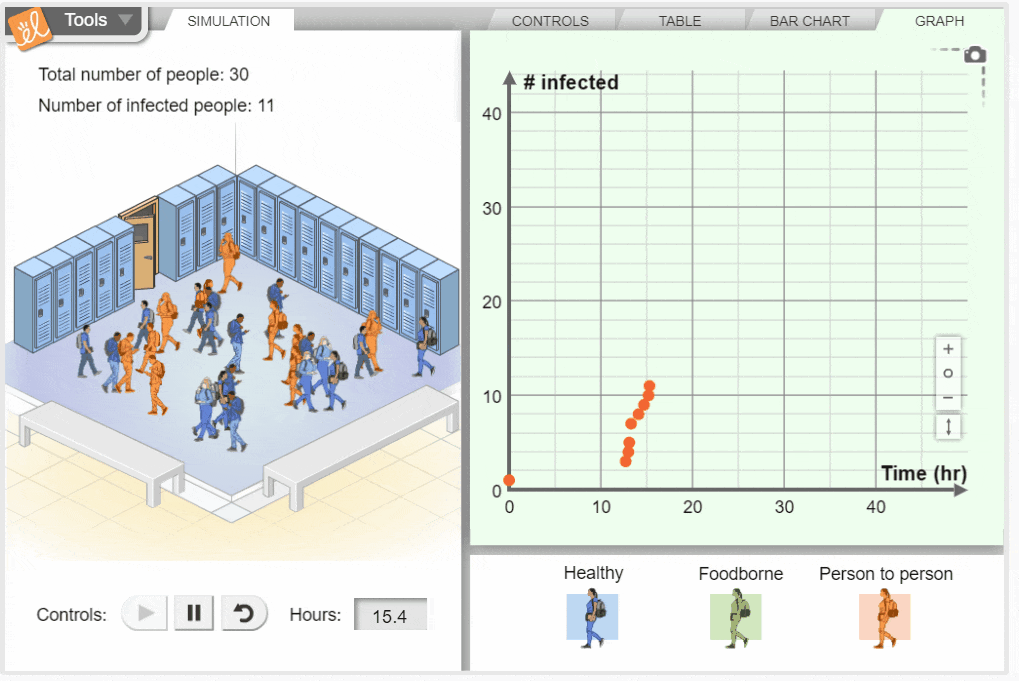The Invisible Threat: Teaching Disease Spread to Students

Sit in any classroom, and you’ll hear the sounds. Coughing. Sneezing. Blowing noses. Clearing throats. Even quick footsteps of the occasional student running out the door to the restroom. Infectious diseases are everywhere! Schools can feel like Petri dishes for germs. That’s why students must understand the ways that diseases spread. Learning the basics of infectious diseases, the modes of disease transmission, and ways to prevent the spread are not just school assignments; they’re essential life lessons.
What are infectious diseases? They are illnesses caused by organisms like viruses and bacteria that get inside the body and increase in numbers, causing harmful effects. Common diseases caused by viruses include colds, gastroenteritis, and influenza. Bacteria cause strep throat and salmonella. Most contagious diseases are one of four types: bacterial, viral, parasitic, or fungal.
How are infectious diseases spread?
Everyone had crash courses in infectious diseases and public health when COVID-19 shut the world down in 2020. There was a lot of talk about immune systems, disease spread, and what to do with infected individuals. Because infectious diseases have different causes, it’s important to look closer. How do infectious diseases spread? A few different modes of transmission spread contagious diseases.
What are the main modes of disease transmission?
When germs get into the body and multiply, they can cause reactions. So, how do pathogens or infectious agents transfer from one person, object, or animal to another?
- Direct contact with an infected person is common.
- Infectious diseases are also transmitted through droplets, which get into the air when an infected person coughs or sneezes.
- Harmful organisms can live in the air and on surfaces for long periods of time. Those enter the body through breathing the affected air or touching the surface, then touching your mouth, nose, or eyes before washing your hands.
- Animals can spread diseases to humans through bites, scratches, or even feces in a litter box.
- Contaminated food and water can also be sources of organisms that cause disease.
Student exploration of disease spread through interactive activities
What about activities to teach about spreading infectious diseases? Use activities that demonstrate the spread of disease and how to prevent the spread.
- Spray Bottle Sneeze shows how sneezes and coughs spread through the air. All you need is a spray bottle with a mist setting, water, and tissues. Walk around the room and spray the bottle. Ask students to hold up their hands. Do they feel the droplets? Then, ask them to hold up tissues. Does the water stop in the tissue instead of landing on their hands? Follow up with a discussion about disease spread and prevention.
- Viral Art allows kids to show what they learn through creativity. Ask students to design a virus and write about how it gets into the body and the symptoms of the disease it causes.
- Wash It Off demonstrates the importance of handwashing. Purchase a resource like Glo Germ™ if the school budget allows. Washable paint also works. Ask students to put the fluid or washable paint on their hands. After allowing it to dry, it’s time to wash off the germs. Did a simple wash do the trick? Were parts of the hands, such as around fingernails, more difficult to clean?
One of the most effective ways to teach disease spread is to simulate disease through virtual labs. Look no further than Gizmos!

Disease Spread Gizmo
In the Disease Spread simulation, students observe the spread of disease through a group of people. The transmission methods can be chosen and include person-to-person, airborne, foodborne, and any combination thereof. The probability of each form of transmission and the number of people in the group can also be adjusted.
Access the Disease Spread Gizmo and ensure your students understand the critical topic.
Ready to use more simulations and STEM Cases with your students? All you have to do is take a trial.